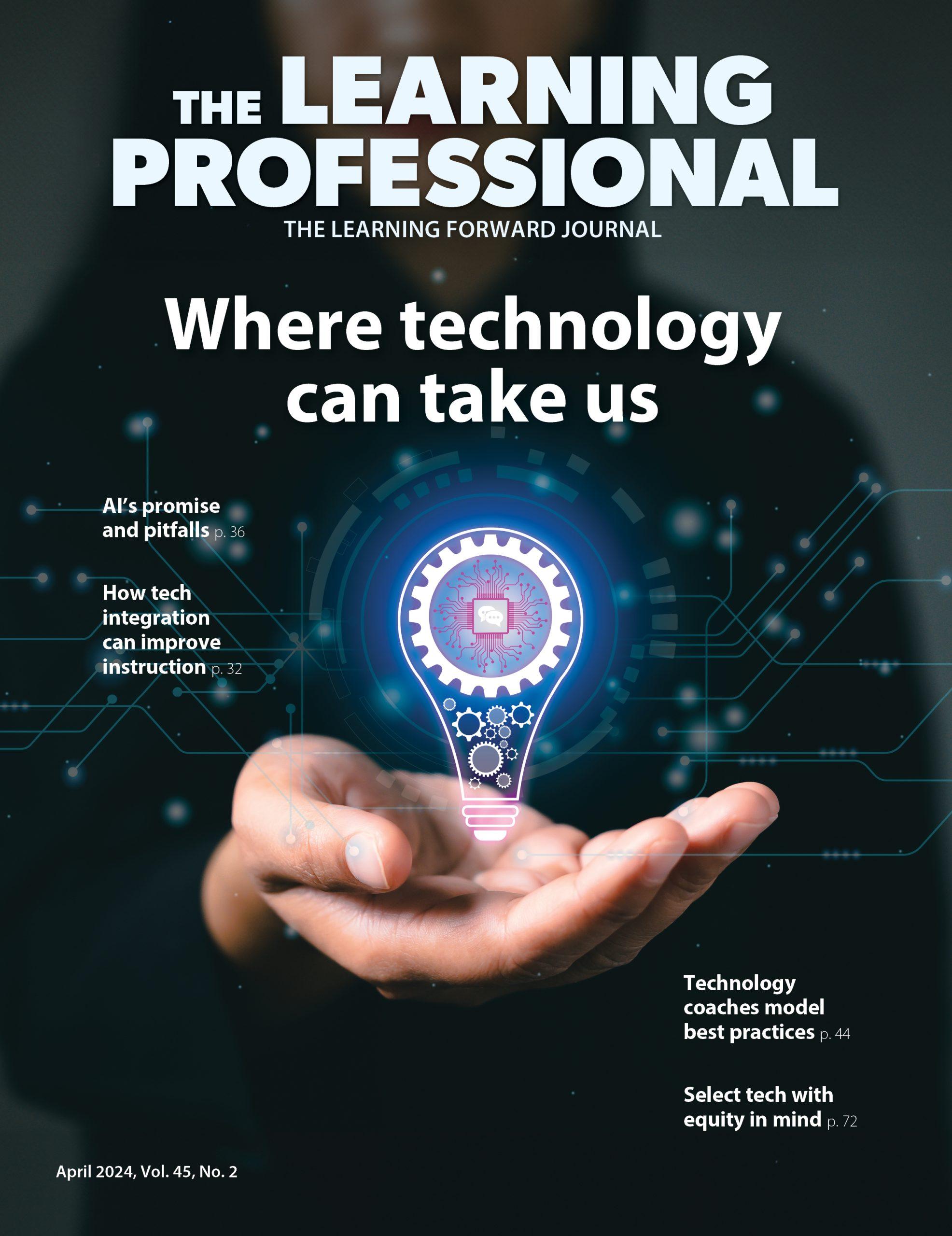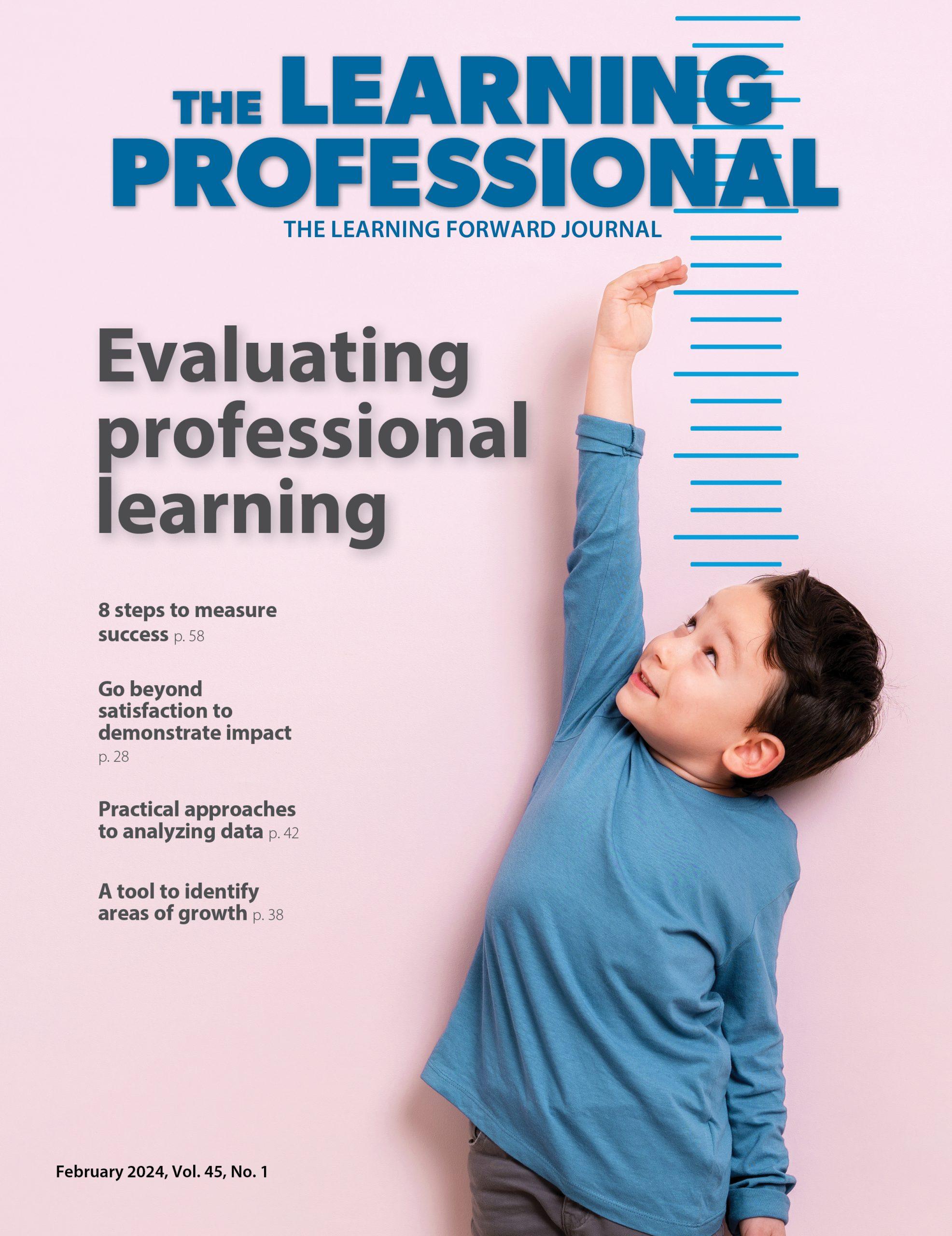From The Director
The goals we want for students must be considered in the learning designs we create for adults
By Learning Forward
October 2011
Vol. 32 No. 5
Those who have read Learning Forward’s Standards for Professional Learning may realize by now that not all professional learning is created equal. In terms of the Learning Designs standard, that means that not all professional learning is designed appropriately, and not all professional learning achieves its intended results.
Establishing clarity about the intended outcomes for professional learning must precede the selection of the learning design to ensure proper planning, implementation, follow-up support, and evaluation. A common framework for explaining intended outcomes is KASAB, which stands for knowledge, attitudes, skills, aspiration, and behaviors (Killion, 2008, p. 38). There are strategies that are appropriate for developing awareness (K=knowledge); changing minds (A=attitudes); developing expertise (S=skills); inspiring action (A=aspiration); or instilling routines (B=behaviors). (See tool on p. 55.)
A leader demonstrates poor judgment when he or she holds individuals accountable for particular results after selecting the wrong learning design for achieving them. Let’s say a school system adopts a new math program at the elementary level. After several months engaging teachers in examining various options, adopting a new philosophy about math instruction, purchasing new technology and manipulatives, the district is ready to launch the initiative. District staff convene all elementary teachers in a large auditorium to provide a half-day introduction to the new math curriculum. At the end of the day, the district curriculum director announces that evaluators will assess teachers’ progress in using the curriculum during the first six weeks. The district has no other plans for ongoing support.
I could save the district the expense and effort of evaluation. According to research from Bruce Joyce and Beverly Showers (1980), the district should expect to hear that about 10% of the teachers are mastering the new curriculum. Show-and-tell teaching is not an effective design for promoting the development of KASAB. While the district had invested considerable time thinking about its outcomes, it failed to select appropriate learning designs to achieve them.
According to the Learning Designs standard, designing effective professional learning combines sophisticated understanding of adult learning theories, research, and models of human learning. There are several key factors to keep in mind when selecting and designing learning. Educator learning should replicate
student learning. In other words, if principals are learning how to lead learning teams, the learning experience should occur within learning teams. If teachers are learning how to implement problem-based learning strategies, they should learn it by experiencing problem-based learning. The goals we want for students must be included in the designs we create for the adults.
Powerful learning strategies include active engagement, modeling, reflection, metacognition, application, feedback, ongoing support, assessment, and more. It occurs in formal, informal, and hybrid learning settings and is organized for individuals, teams, and schoolwide groups. Some learning occurs during the workday, and other learning occurs after school, in evenings, and during the summer.
We know educators’ time is precious and resources are tight. We have a tremendous responsibility to ensure professional learning is beneficial, meets educators’ goals, and leads to its intended results for students.
References
Joyce, B. & Showers, B. (1980, February). Improving inservice training: The messages of research. Educational Leadership, 37(5), 379-385.
Killion, J. (2008). Assessing impact: Evaluating staff development (2nd ed.). Thousand Oaks, CA: Corwin Press & NSDC.
Learning Forward is the only professional association devoted exclusively to those who work in educator professional development. We help our members plan, implement, and measure high-quality professional learning so they can achieve success with their systems, schools, and students.
Recent Issues
LEARNING TO PIVOT
August 2024
Sometimes new information and situations call for major change. This issue...
GLOBAL PERSPECTIVES
June 2024
What does professional learning look like around the world? This issue...
WHERE TECHNOLOGY CAN TAKE US
April 2024
Technology is both a topic and a tool for professional learning. This...
EVALUATING PROFESSIONAL LEARNING
February 2024
How do you know your professional learning is working? This issue digs...








